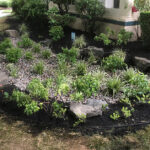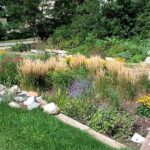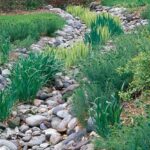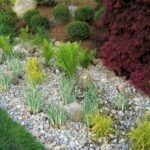Rain garden design is becoming increasingly popular as a sustainable and eco-friendly way to manage stormwater runoff. These uniquely designed gardens are specifically engineered to capture and filter rainwater, preventing it from flowing directly into storm drains and polluting local waterways. By incorporating native plants and strategic landscaping features, rain gardens can also add aesthetic appeal to outdoor spaces.
When designing a rain garden, it is important to consider the location and size of the garden. The ideal location is in a low-lying area where water naturally collects, such as at the base of a slope or near a downspout. The size of the garden should be based on the surface area of the contributing runoff area, with larger areas requiring larger gardens to effectively capture and filter the water.
In terms of design features, a key component of a rain garden is the berm or basin that collects and holds the rainwater. This can be created using soil, rocks, or other materials to create a depression in the ground that can temporarily store excess water. It is also important to incorporate a overflow mechanism, such as a perforated pipe or underground drainage system, to prevent the garden from becoming waterlogged during heavy rain events.
Another critical aspect of rain garden design is plant selection. Native plants are typically recommended for rain gardens, as they are well adapted to local climate conditions and require minimal maintenance. These plants can also help to improve water infiltration, filter pollutants, and provide habitat for local wildlife. Popular plant options for rain gardens include sedges, rushes, grasses, and flowering perennials.
In addition to plant selection, the layout and placement of plants within the rain garden are also important considerations. Plants should be arranged in strategic zones based on their water requirements and ability to tolerate occasional flooding. By grouping plants with similar needs together, it is possible to create a visually appealing and functional rain garden that thrives in all weather conditions.
Overall, rain garden design is a innovative and sustainable way to manage stormwater runoff while also enhancing the beauty of outdoor spaces. By carefully considering factors such as location, size, design features, plant selection, and layout, it is possible to create a rain garden that effectively captures and filters rainwater, reduces erosion, and supports local biodiversity. With their many environmental and aesthetic benefits, rain gardens are sure to continue to gain popularity as a green landscaping option for homeowners and communities alike.










